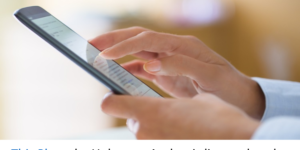The instant communication smartphones allow has made texting popular in Canadian hospitals, according to a study authored by the University of Toronto in 2018. Routine patient information was more likely to be relayed from surgeons to trainees by text, than by email or phone. And 72 per cent of surgeons felt that their texting to trainees enhanced patient care.
Benefits of Texting
There can certainly be huge benefits — especially in a team-based care environment like a hospital — but also serious risks. A doctor in British Columbia was suspended and fined $20,000 a few years ago for texting a photo of a patient. Physicians need to ensure they’re ensuring respecting and complying with privacy legislation and institutions communications policies. And they need to avoid negative perceptions while clearly communicating their messages.
Some important things to keep in mind include knowing and understanding the privacy legislation in your province or territory, guidelines from your Colleges, individual facility policies, and whether or not you use encryption for your device.
Tips for Texting
Tips for working on an unsecured network or unencrypted device:
- Making sure group texts only include people in the patient’s circle of care and that you’re using your contact list (and turn off AutoFill names) to avoid sending anything to the wrong recipient
- Use an instant messaging application that is secure and encrypts data on transfer and follows Canadian privacy laws and regulations
- Avoiding sharing identifiable personal health information entirely and restrict text use to things like setting up appointments or phone calls
- Taking quick steps if a message is ever sent to the wrong recipient; notifying them of the error and requesting they delete it, and adding new recipients to your contact list
- Deleting sensitive information is important in the event your device is lost or stolen, but you should remote-wipe your phone if you believe it is unrecoverable. Be sure to turn on these features before the device goes missing.
- Physicians should create policies and training on privacy requirements, and have all staff members at a practice sign a confidentiality agreement specifying their duties in dealing with personal health information
- If you use your smart phone to dictate (e.g. with Dictate + Connect), make sure that the connection to your medical transcription company is secure and complies with all federal, provincial, territory and facilities legislation and regulations.
Challenges with Texting
There may also be a danger in miscommunication among doctors who use text messages. These messages can be considered evidence in legal proceedings or in complaints to Colleges, and are subject to the same clear and professional communication standards as care records. The Canadian Medical Protective Association has outlined some issues and recommendations on electronic communication relating to patient care.
Tips for clear communication include:
- Using full words and avoiding most acronyms
- Avoiding text for complex circumstances in need of long explanations
- Being wary of autocorrect on iPhones (which can be turned off); re-read all messages before sending
- Document (including screengrabs) any professional opinions given on clinical cases as you would writing a formal consult note or conversation via phone or email
- At worst, summarize the text exchange and document the summary in the medical record. Some hospitals may have policies or protocols for documentation in these circumstances.
- Always assume the content of a text exchange is being deemed a consult
 Aside from the obvious suggestion that you refrain from texting photos or other unprofessional or inappropriate things, the perception of professionalism is essential to maintaining a solid reputation as an individual or clinic.
Aside from the obvious suggestion that you refrain from texting photos or other unprofessional or inappropriate things, the perception of professionalism is essential to maintaining a solid reputation as an individual or clinic.
Make sure to always keep your language appropriate and your style professional on a medium that lends itself to the casual. Keep the phone in your pocket when dealing with any patient, unless there is an emergency or you’re using it as a tool as part of a discussion, or using it to dictate and have the audio sent securely to your medical transcription company.
2Ascribe Inc. is a medical and dental transcription services agency located in Toronto, Ontario, Canada, providing medical transcription services to physician, specialists (including psychiatry, pain and IMEs), dentists, dental specialties, clinics and other healthcare providers across Canada. Our medical and dental transcriptionists take pride in the quality of your transcribed documents. WEBshuttle is our client interface portal for document management. 2Ascribe continues to implement and develop technology to assist and improve the transcription process for physicians, dentists and other healthcare providers, including AUTOfax. AUTOfax works within WEBshuttle to automatically send faxes to referring physicians and dentists when a document is e-signed by the healthcare professional. As a service to our clients and the healthcare industry, 2Ascribe offers articles of interest to physicians, dentists and other healthcare professionals, medical transcriptionists, dental transcriptionists and office staff, as well as of general interest. Additional articles may be found at http://www.2ascribe.com. For more information on Canadian transcription services, dental transcription, medical transcription work or dictation options, please contact us at info@2ascribe.com.

